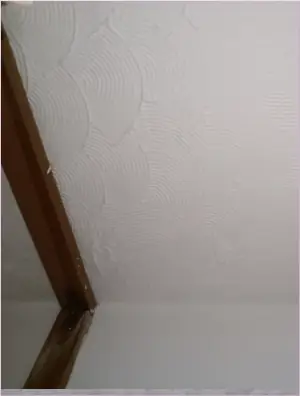last updated July 11th, 2025
When purchasing a property in the UK, most buyers focus on location, price, and structural integrity. However, hidden environmental risks, such as radon gas, flooding and soil contamination can pose serious health and financial concerns. Understanding these risks before buying a home can help you to avoid costly surprises and safeguard yourself. This article explores radon gas, as well as other key environmental hazards that you as home buyer should be aware of when investing in a property.
Radon is a colourless, odourless, and radioactive gas that occurs naturally as uranium breaks down in soil, rocks and water. It can accumulate in buildings, particularly in basements and poorly ventilated areas.
The South West, Wales, the Midlands and parts of Scotland have higher levels of radon due to their geological makeup. The UK Health Security Agency (UKHSA) - UK Radon.org provides maps indicating radon-affected areas helping you to assess risk levels before you buy a home.
Long-term exposure to radon gas increases the risk of lung cancer making it a significant concern for home buyers if they discover it is near a property.
You can check for radon risk by...
If a property has high radon levels, several strategies to reduce risks can be used..
Several other environmental hazards can affect a property's safety, value and most importantly the ability to insure it at a reasonable price.
People generally only think of rain as the flood risk while there are many sources. As this is such a wide subject, there is a complete section dedicated to it at Buying a home with flood risk or chance of water damage.
Land contamination occurs when hazardous substances such as heavy metals, industrial chemicals, gas/coal or asbestos are present in the soil. This is particularly common in areas with a history of industrial use or where there were storage tanks for gas or oil. Properties built after 2000 are better regulated and have more protection in planning law than those built earlier. 'Brownfield' sites (those that were previously used by industry including petrol stations) are everywhere and you should always check on remedial works.
A Local Authority environmental search can reveal potential contamination issues but historical information is also of benefit so always check the internet for old maps or photos of the areas that are of interest to you. Developers are obliged to decontaminate land prior to building and professional soil testing to assess contamination levels is initially carried outThen the soil be may removed and tests carried out again to ensure residual risk is minimal.
Ground can move up, down or sideways and each type of movement carries distinct risks. We cover this in detail in the section on How to Identify Structural Problems Before Buying a Home. A structural survey can identify early signs of ground movement before purchase.
Japanese Knotweed is an aggressive plant that can damage foundations, driveways and walls. Mortgage lenders often refuse loans on properties affected by this plant. Ask the buyer if it is present and if so, how it was treated.
Asbestos was commonly used in UK buildings before the 1999 ban due to its fire-resistant properties. It is present in insulation and also in old 'Artex' ceilings before the 1980s. If disturbed, asbestos fibres can be dangerous but undisturbed, it is reasonably safe. It can be removed professionally.

A solicitor or conveyancer can carry out an environmental search to identify potential hazards such as radon exposure, contaminated land and flood risks.
After you do your own house inspection survey (House viewing checklist for buyers - What is a house buyers inspection?), decide on what professional surveys listed at What are the different types of house buyers survey? you need and have them done as early as possible.
Local councils hold information about historical environmental risks and neighbours may provide insights into recurring problems such as flooding or ground movement. Also ask your insurance company about the area.
If a risk is identified, a specialist can assess the extent of the problem and suggest mitigation measures and costs before finalising the purchase.